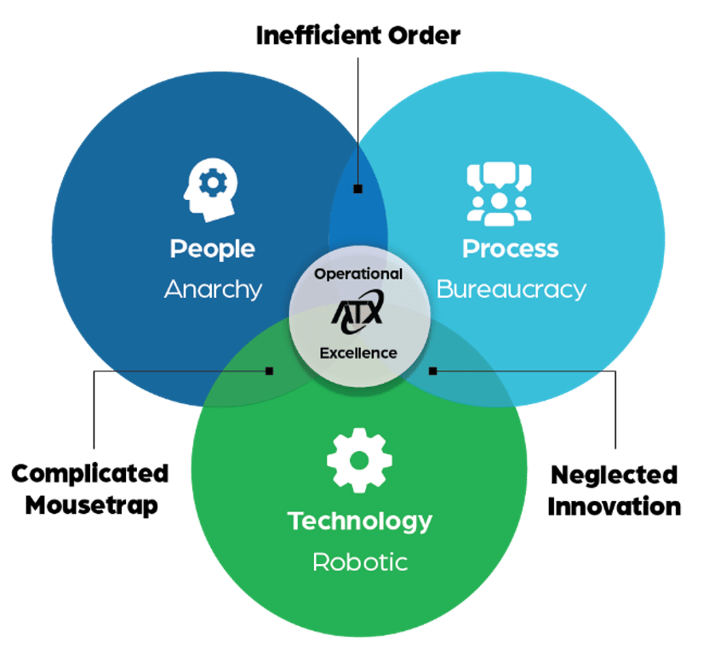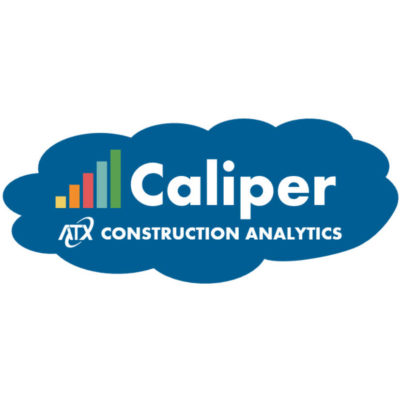Author: Mark DiGiovanni
Overhauling the IT environment for ERP, CRM, and other enterprise applications can provide significant rewards in terms of improved productivity and revenue-generation capabilities. But the process can be coupled with significant costs and business disruptions if not managed properly.
When businesses are developing an IT application strategy, we often see three common outcomes of poor IT planning:
- Neglected Innovation
- Inefficient Order
- Complicated Mousetrap

Getting Started
Overcoming these challenges and achieving operational excellence requires the right balance between people, process, and technology in the planning cycle. A common issue that causes these problems while increasing costs and disruptions is that either the IT team or the business executives take the lead on the project—without incorporating significant input from the other group. Both need to be heavily involved to satisfy the business requirements while also considering the technology and budgetary impacts.
To effectively coordinate an application overhaul, business leaders and IT need to work together on a long-term strategic plan. The planning cannot be confined to an annual deadline. The danger comes when planning gets put off a future date, resulting in misaligned priorities and lost opportunities.
Many companies take a haphazard approach with no formal framework in place. The direction then gets set based on budgets for the next fiscal year. This often forces businesses to “back into” a desperate plan to fit their resources, projects and activities. This in turn causes problems. If the budget gets set by an arbitrary deadline, it forces people to complete tasks before they—and the business—are ready.
Aligning People, Process, and Technology
If you are about to develop an IT application strategy for your business, we recommend taking into consideration the people, process, and technology that will be involved. Each component plays a significant role and relies on alignment with the other components to pave a smooth path towards operational excellence. Problems can arise if too much focus in placed on just one area, or if one of the components is left out.
Proactively developing an IT application strategy that aligns your people, process, and technology helps you avoid situations where the required replacement of a core business application—such as ERP, CRM and other operational systems—forces the need to reactively evaluate the IT landscape. When this happens, businesses don’t always follow a well thought-out process to determine when to make the change.
Building an IT Application Strategy Roadmap
When overhauling your IT application environment, a strategy roadmap is essential for a growing business with multiple enterprise software solutions. The roadmap will naturally change as the features within the applications vary. That makes it critical to understand the current functionality in your application environment, how various business applications integrate, and what gaps are present between the required future functionality and the current system features.
Based on our work with hundreds of organizations to develop an actionable transformation roadmap, we compare client organizations against leading practices and use our experiences as part of our evaluation. The output from our assessment is a strategic plan for performance improvements that includes actionable implementation steps, the timeline, budgetary costs, options, and alternatives.
When developing IT application strategies for our clients, we recommend following the below three-step approach:
Discovery
Includes the process of understanding the organization’s strategy, objectives and vision. You should also take inventory of the existing technology and rationalize the current IT support environment. From there, we recommend conducting facilitated sessions with key business owners to document current business processes, information flow and key measures, and to identify gaps requiring resolution. We also recommend surveys of the user community.
Analysis
We recommend diagramming the ideal future state and documenting key system requirements for data capture, processing, integration and reporting. Following this process, you are ready to begin outlining the options for the future state systems environment, the data model, and the potential phases for deployment. Each option should have pros and cons evaluated, and the collective team can then evaluate these options to determine the appropriate approach.
Roadmap
All findings—including recommendations, benefits and risks—should be summarized and presented to the key stakeholders to agree on a go-forward approach. Based on feedback from executive management and organizational priorities, a roadmap that takes into account the resources, budget and key dependencies between identified initiatives can then be developed. The output should not be a single-year plan or linear path, but rather a comprehensive plan that incorporates multiple pathways and initiatives in a coordinated manner that leads towards the desired future state.
Ensuring a Smooth Overhaul
We hope this blog gives you a good sense of what it takes to develop an IT application strategy and the importance of bringing business leaders and the IT team together to collaborate. By working in sync and providing support to each other, both groups are better positioned to ensure the overhaul of the application environment goes as smoothly as possible. This in turn will help you embrace, rather than neglect, innovations that enable the business to function more efficiently.
For more information on developing an IT application strategy for your company, visit our technology advisory page or reach out to me directly at mark.digiovanni@atxadvisory.com




